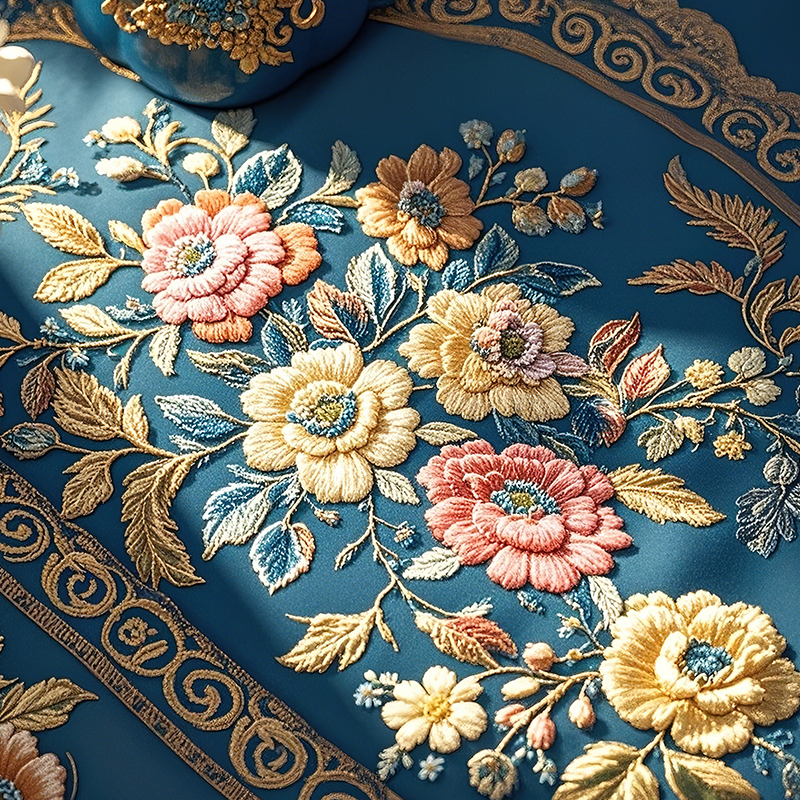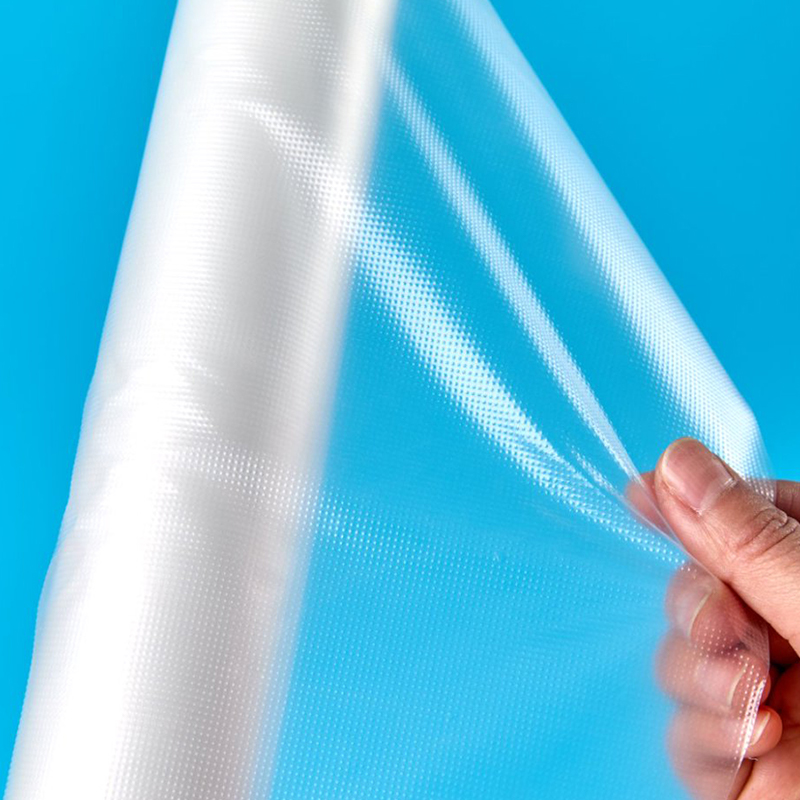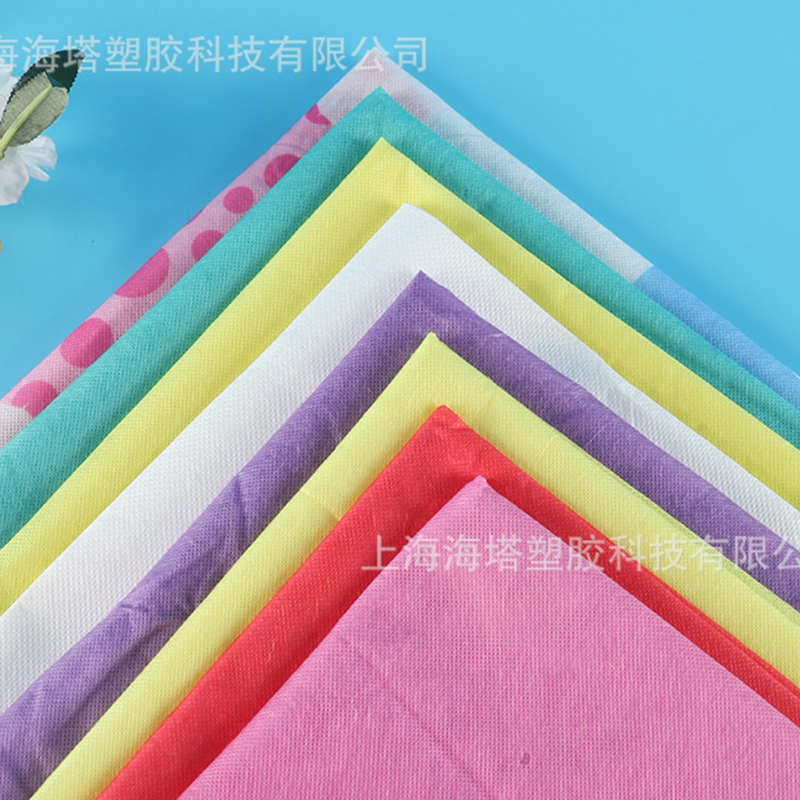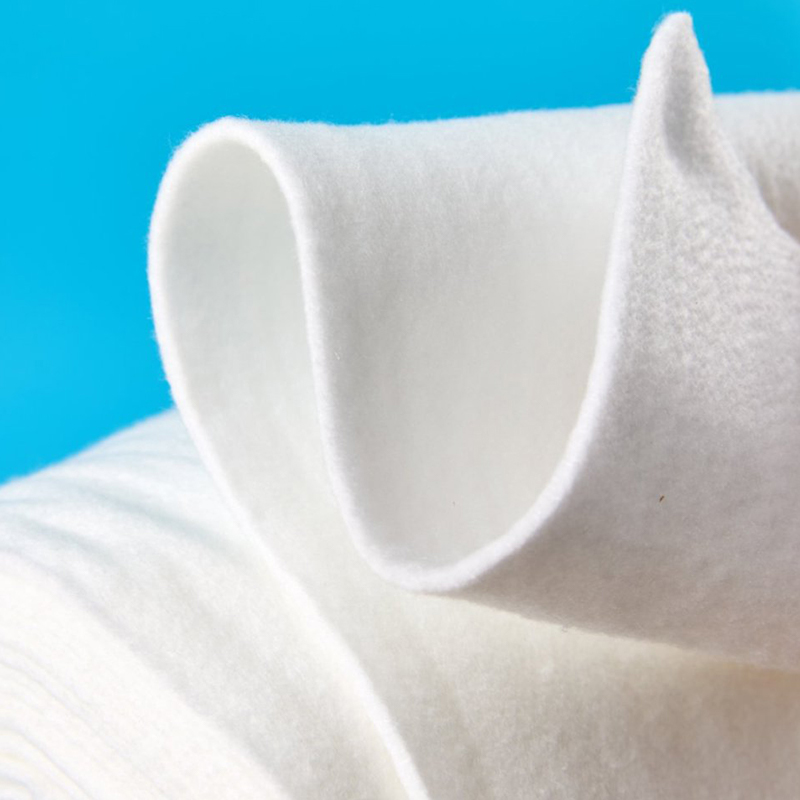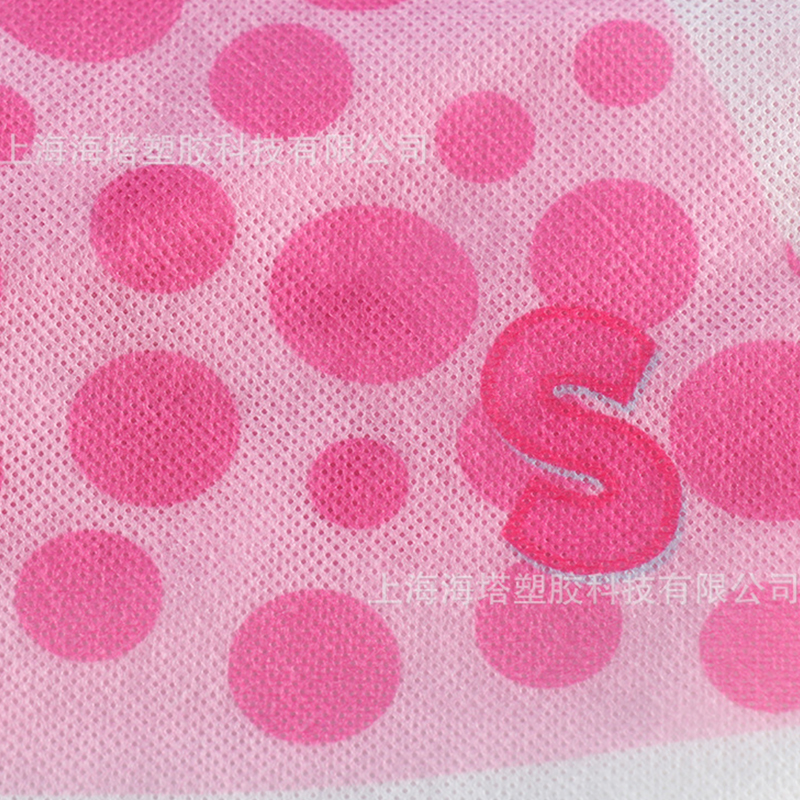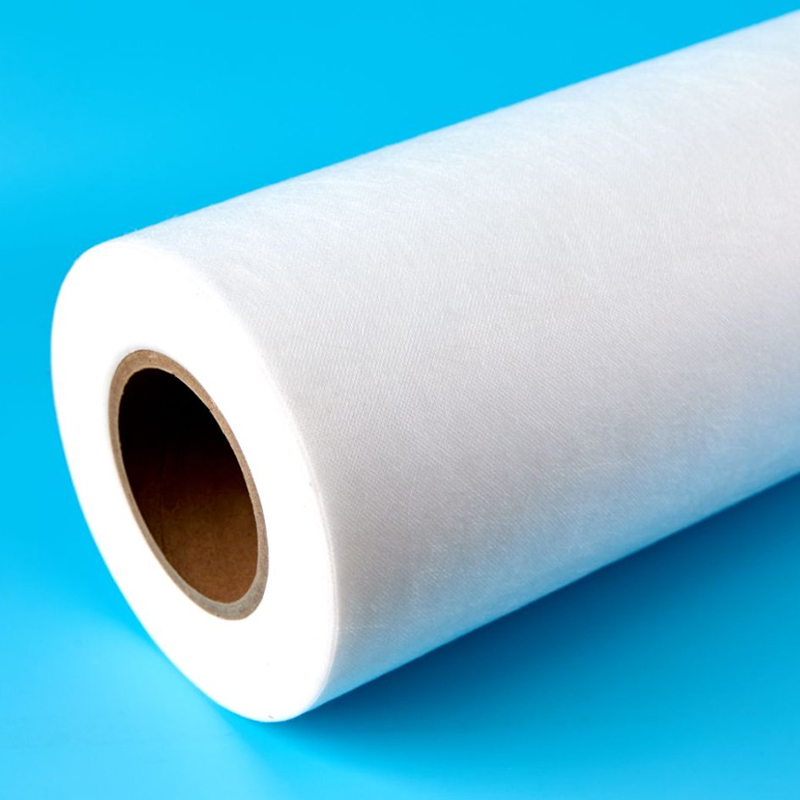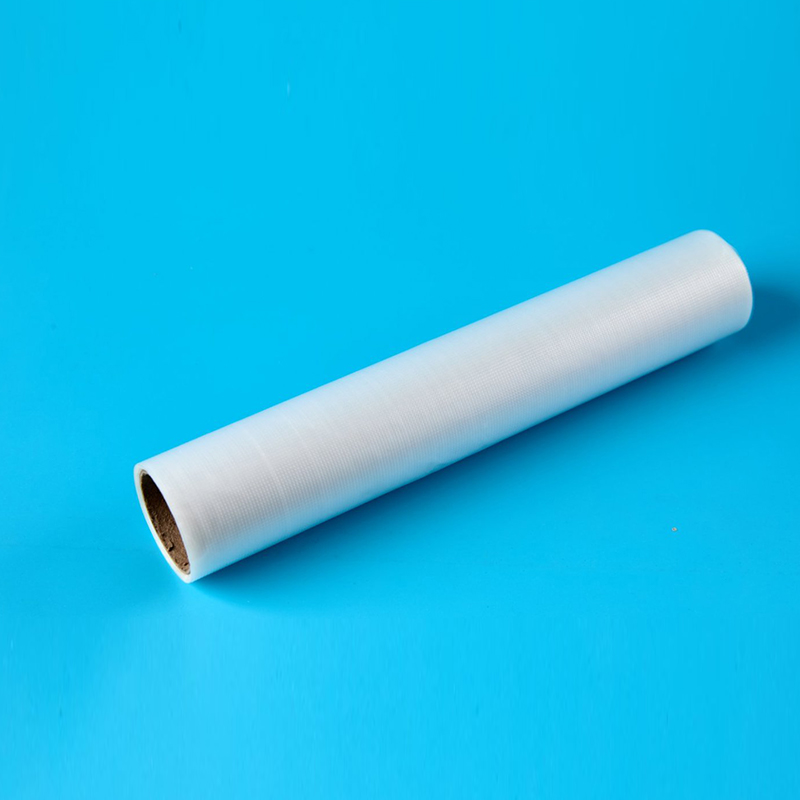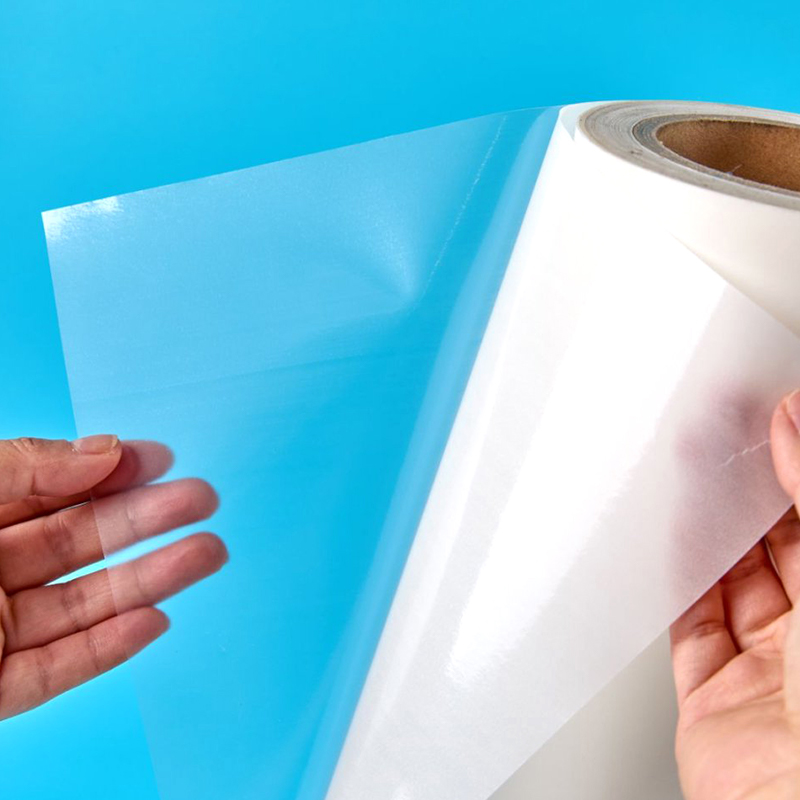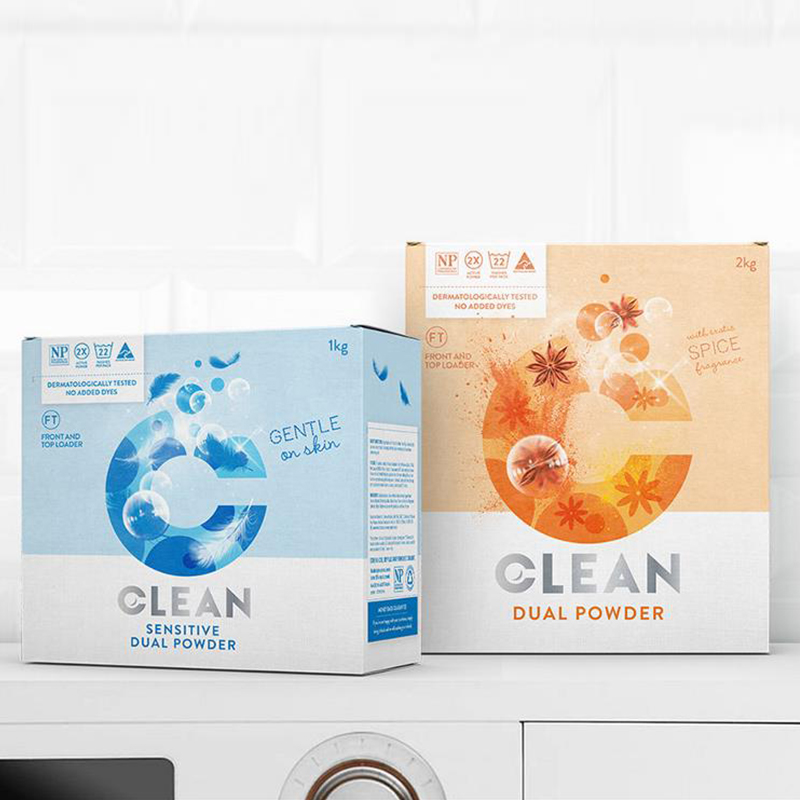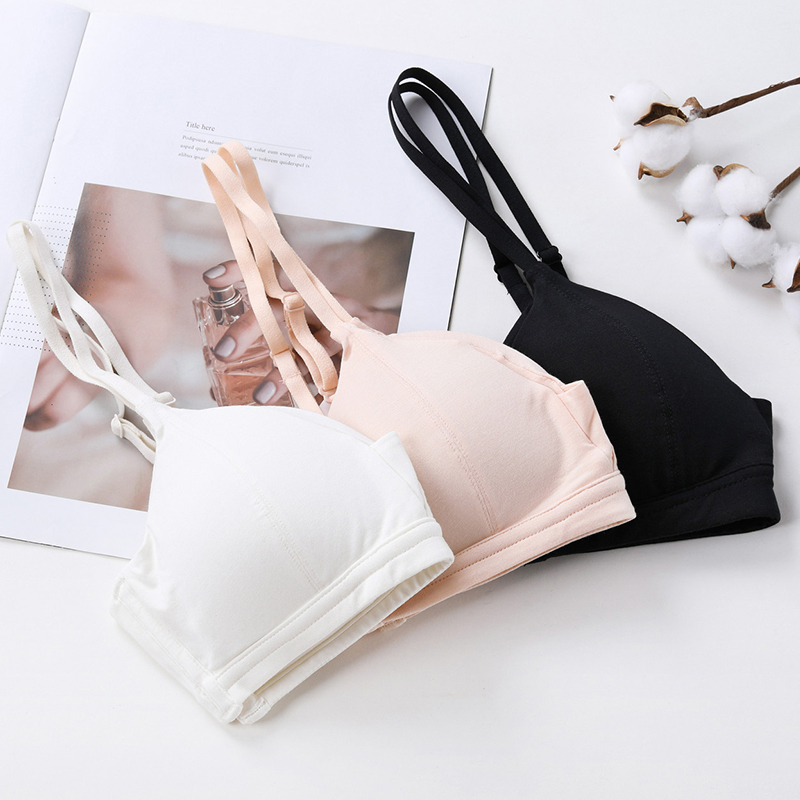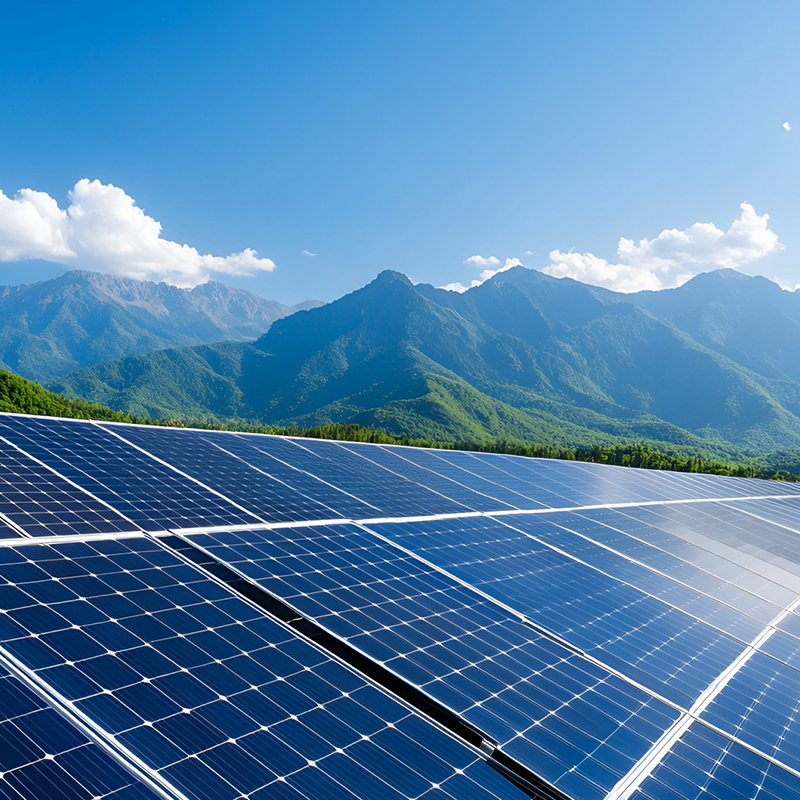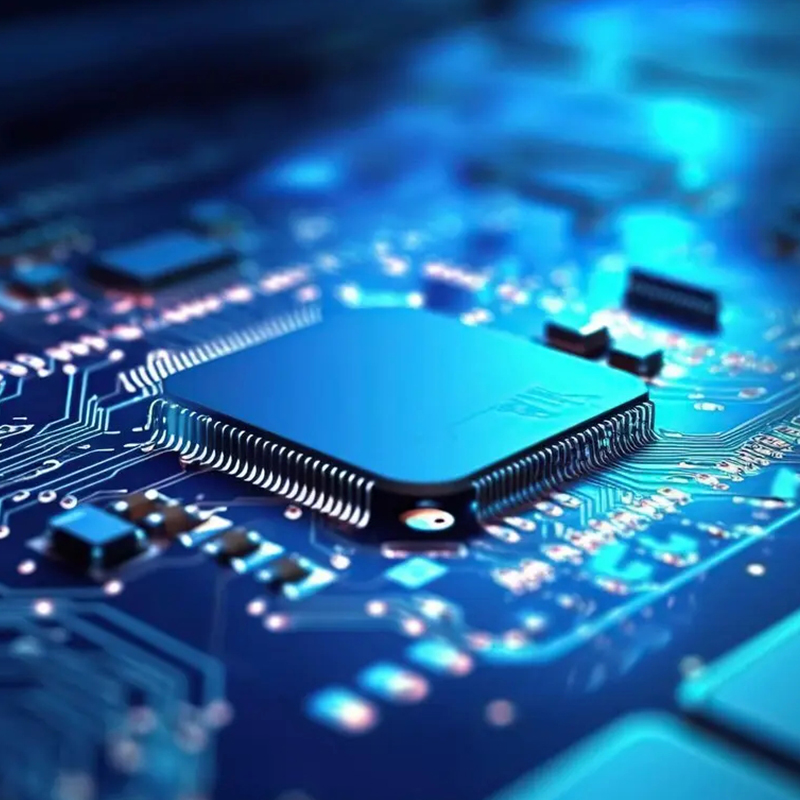Applications of Water-Soluble Nonwoven Fabrics in Basic Embroidery Techniques
(1) Ordinary Embroidery
During ordinary embroidery operations, the water-soluble nonwoven fabric is laid flat beneath the embroidery fabric to serve as a backing. Its lightweight material ensures that it does not interfere with the normal operation of the embroidery machine or affect the flatness of the embroidery pattern. After the embroidery is completed, the embroidered item is immersed in water, and the water-soluble nonwoven fabric gradually dissolves. This process makes the embroidery pattern more three-dimensional and lightweight, allowing it to perfectly adhere to the fabric without leaving any residual backing material that could affect the aesthetics. For example, when embroidering patterns on silk handkerchiefs, using a water-soluble nonwoven fabric as the backing makes the embroidered flowers appear as if they are blooming on the surface of the silk after dissolution, enhancing the texture and artistic value of the handkerchief.
(2) Three-Dimensional Embroidery
For three-dimensional embroidery, water-soluble nonwoven fabrics can serve as the base material for constructing three-dimensional shapes. According to design requirements, the water-soluble nonwoven fabric is first cut into specific shapes, and then embroidery and filling are carried out on it. For instance, when creating three-dimensional flower embroidery, multiple layers of water-soluble nonwoven fabric cut into petal shapes are stacked. The edges of the petals are fixed through embroidery, and details are added. Materials such as cotton are filled to create a three-dimensional effect. After the embroidery is completed and subjected to the water-soluble treatment, the excess water-soluble nonwoven fabric dissolves away, leaving only the delicate three-dimensional embroidery pattern. Applied to areas such as the collars and cuffs of clothing, it can significantly enhance the uniqueness and fashion sense of the garment.
II. Applications of Water-Soluble Nonwoven Fabrics in Embroidery of Different Textile Products
(1) Clothing Embroidery
High-End Fashion: In high-end fashion customization, water-soluble nonwoven fabrics can be used to create unique embroidery decorations. Designers can take advantage of their easy dissolvability to create complex embroidery patterns with a hollow effect. For example, on the skirts and collars of wedding dresses, exquisite lace patterns are embroidered. After the water-soluble treatment, the excess part dissolves, leaving only the delicate embroidery patterns, creating a hazy and romantic aesthetic that makes the wedding dress more dreamy.
Casual Clothing: For casual clothing, embroidery with water-soluble nonwoven fabrics can add personalized elements. On daily garments such as T-shirts and denim jackets, patterns like letters and cartoons are embroidered. By combining with the dissolving properties of the water-soluble nonwoven fabric, a unique washed and aged effect can be achieved, meeting consumers' demand for personalized clothing and enhancing the market competitiveness of the products.
(2) Home Textile Embroidery
Bedding: In the embroidery of home textile products such as bed sheets, quilt covers, and pillowcases, water-soluble nonwoven fabrics can serve as a stable embroidery base. It ensures the flatness of the fabric during the embroidery process, making the embroidery patterns more regular and delicate. After the embroidery is completed and through the water-soluble treatment, the embroidery patterns become more prominent, complementing the overall style of the home textile products and enhancing their quality and decorative effect. For example, in bedding with embroidered floral patterns, after dissolving the water-soluble nonwoven fabric, the flowers seem to bloom three-dimensionally on the fabric, creating a warm and comfortable bedroom atmosphere.
Curtains: For the embroidery decoration of curtains, water-soluble nonwoven fabrics can help realize complex pattern designs. By embroidering various geometric patterns, landscape patterns, etc., on the water-soluble nonwoven fabric, a unique hollow embroidery effect is formed after dissolution. This allows the curtains to block light while adding an artistic touch, playing a role in decorating the home environment and meeting the requirements of different consumers for home decoration styles.
III. Embroidery Applications of Water-Soluble Nonwoven Fabrics Combined with Other Materials
(1) Combination with Sequin and Bead
Combining water-soluble nonwoven fabrics with decorative materials such as sequins and beads can create gorgeous and dazzling embroidery effects. First, the sequins and beads are fixed on the water-soluble nonwoven fabric, and then they are firmly connected to the fabric through embroidery. After the embroidery is completed and the water-soluble treatment is carried out, the excess water-soluble nonwoven fabric disappears, leaving only the shiny sequin and bead embroidery patterns. This is suitable for clothing that requires a sense of grandeur, such as stage costumes and evening gowns, adding luster to the garments.
(2) Combination with Ribbon and Yarn
When combining with ribbons and yarns for embroidery, water-soluble nonwoven fabrics can serve as a supporting material to keep the ribbons and yarns stable in shape and position during the embroidery process. Through the combination of ribbons and yarns of different colors and materials, a wide variety of patterns and textures can be embroidered on the water-soluble nonwoven fabric, such as creating embroidery works with ethnic styles. After the water-soluble treatment, a unique three-dimensional embroidery effect is formed, increasing the layering and artistic expressiveness of the embroidery works. This is widely used in ethnic costumes, characteristic handicrafts, and other fields.
IV. Technical Key Points of Water-Soluble Nonwoven Fabrics in the Embroidery Process
(1) Selection of Appropriate Water-Soluble Nonwoven Fabrics
According to the embroidery process and product requirements, select water-soluble nonwoven fabrics with different grammages, dissolution rates, and strengths. Generally, for fine embroidery and scenarios requiring rapid dissolution, choose water-soluble nonwoven fabrics with lower grammage and faster dissolution rates; for three-dimensional embroidery and situations requiring stronger support, choose those with higher grammage and greater strength to ensure the smooth progress of the embroidery process and the final effect.
(2) Control of Embroidery Parameters
During the embroidery process, reasonably adjust parameters such as the stitch pitch and stitch density of the embroidery machine. An overly large stitch pitch will affect the fineness and firmness of the embroidery pattern, while an overly small stitch pitch may damage the fabric and the water-soluble nonwoven fabric. The stitch density should be moderate, which can not only ensure the beauty of the embroidery pattern but also prevent the dissolution effect of the water-soluble nonwoven fabric from being affected by overly dense stitches. At the same time, select appropriate embroidery threads according to the characteristics of the embroidery materials and the water-soluble nonwoven fabric to ensure the embroidery quality.
(3) Water-Soluble Treatment Process
After the embroidery is completed, pay attention to the water temperature, soaking time, and stirring method during the water-soluble treatment. Different types of water-soluble nonwoven fabrics require different dissolution water temperatures, generally between 30°C and 60°C. The soaking time depends on the thickness and grammage of the water-soluble nonwoven fabric, usually ranging from 10 to 30 minutes. During the soaking process, appropriate stirring can accelerate the dissolution, but avoid excessive stirring to prevent damage to the embroidery pattern. After the treatment is completed, rinse the embroidered item with clean water to ensure that the water-soluble nonwoven fabric is completely dissolved, and then dry it and carry out subsequent finishing processes.

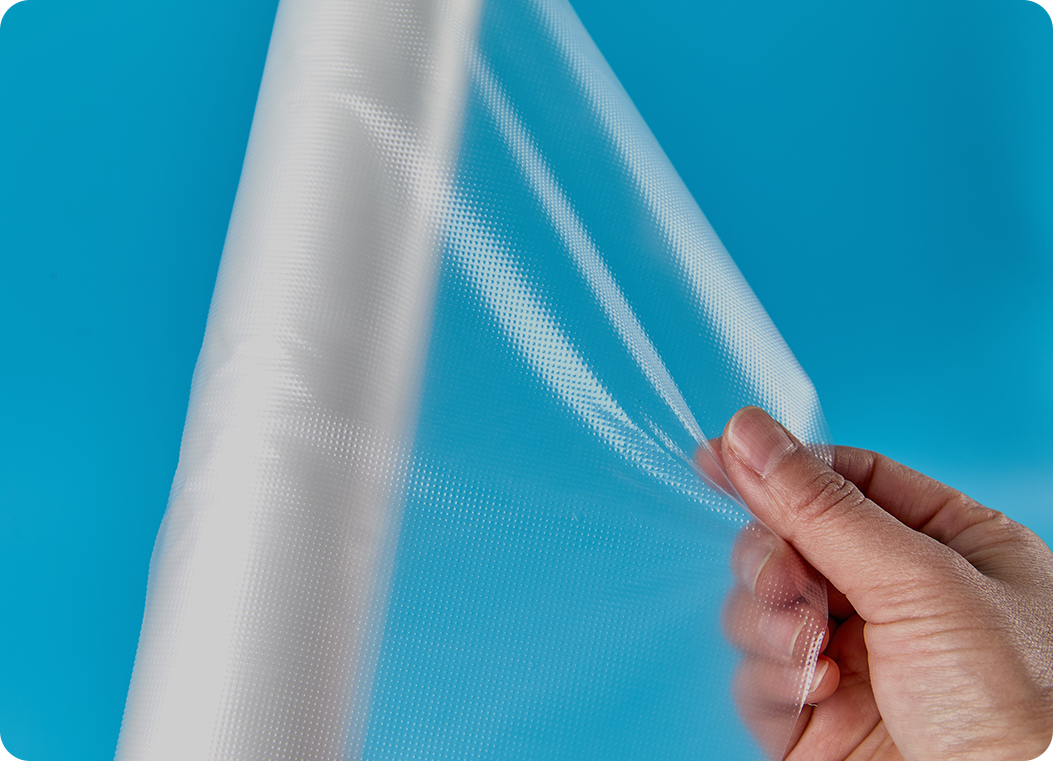



 English
English 中文简体
中文简体 Türk
Türk